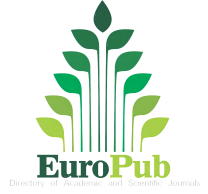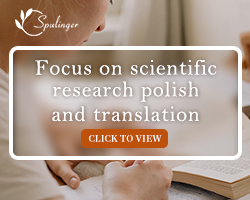Quality and Safety of Polygonum multiflorum Thunb.: Bridging Ancient Processing Wisdom with Modern Scientific Validation
DOI:
https://doi.org/10.62767/jecacm603.0801Keywords:
Polygonum multiflorum Thunb., anthraquinones, stilbenes, Nine-steaming and nine-sun-drying, quality controlAbstract
Polygonum multiflorum Thunb. (PM), a renowned medicinal herb in Traditional Chinese Medicine (TCM), exhibits dual pharmacological properties of therapeutic efficacy and potential hepatotoxicity, largely influenced by its geographic origin and processing methods. This review synthesizes current evidence on the variations in bioactive constituents (e.g., anthraquinones, stilbenes, and polysaccharides) across different cultivation regions, highlighting the role of climatic and soil factors in shaping its phytochemical profile. Critically, the traditional "nine-steaming and nine-sun-drying" (JZS) processing method is shown to significantly reduce hepatotoxicity by converting free anthraquinones into safer polymeric forms while preserving key active compounds like 2,3,5,4′-tetrahydroxystilbene-2-O-β-D-glucoside (TSG). We further discuss the limitations of existing quality standards and propose a multidimensional evaluation framework integrating metabolomics, fingerprinting, and bioactivity assays to ensure consistency and safety. By integrating traditional knowledge with modern scientific validation, this review offers practical insights for standardizing PM production and enhancing its clinical use, addressing both its historical significance and current challenges in global herbal medicine.
References
Lin L, Ni B, Lin H, et al. Traditional usages, botany, phytochemistry, pharmacology and toxicology of Polygonum multiflorum Thunb.: a review. Journal of Ethnopharmacology 2015; 159: 158-183.
Qian J, Feng CH, Wu ZY et al. Phytochemistry, pharmacology, toxicology and detoxification of Polygonum multiflorum Thunb.: a comprehensive review. Frontiers in Pharmacology 2024; 15: 1427019.
Wu TY, Lin JN, Luo ZY, et al. 2,3,4',5-Tetrahydroxystilbene-2-O-beta-D-Glucoside (THSG) Activates the Nrf2 Antioxidant Pathway and Attenuates Oxidative Stress-Induced Cell Death in Mouse Cochlear UB/OC-2 Cells. Biomolecules 2020; 10(3): 465.
Zhu C, Li J, Tang W, et al. 2,3,5,4'-Tetrahydroxystilbene-2-O-beta-D-glucoside (TSG) from Polygonum multiflorum Thunb.: A Systematic Review on Anti-Aging. International Journal of Molecular Sciences 2025; 26(7): 3381.
Liu Y, Wang W, Sun M, et al. Polygonum multiflorum-Induced Liver Injury: Clinical Characteristics, Risk Factors, Material Basis, Action Mechanism and Current Challenges. Frontiers in Pharmacology 2019; 10: 1467.
Zhang Q, Xu Y, Lv J, et al. Structure characterization of two functional polysaccharides from Polygonum multiflorum and its immunomodulatory. International Journal of Biological Macromolecules 2018; 113: 195-204.
Frenzel C, Teschke R. Herbal Hepatotoxicity: Clinical Characteristics and Listing Compilation. International Journal of Molecular Sciences 2016; 17(5): 588.
Jung KA, Min HJ, Yoo SS, et al. Drug-Induced Liver Injury: Twenty Five Cases of Acute Hepatitis Following Ingestion of Polygonum multiflorum Thunb. Gut and Liver 2011; 5(4): 493-499.
Yang Y, Ge FL, Tang JF, et al. A review of herb-induced liver injury in mainland china. Frontiers in Pharmacology 2022; 13: 813073.
Ruan LY, Li MH, Xing YX, et al. Hepatotoxicity and hepatoprotection of Polygonum multiflorum Thund. as two sides of the same biological coin. Journal of Ethnopharmacology 2019; 230: 81-94.
Qu K, Shen NY, Xu XS, et al. Emodin induces human T cell apoptosis in vitro by ROS-mediated endoplasmic reticulum stress and mitochondrial dysfunction. Acta Pharmacologica Sinica 2013; 34(9): 1217-1228.
Jiang J, Wang Q, Wu Q, et al. Angel or devil: the dual roles of 2,3,5,4'-tetrahydroxystilbene-2-O-beta-D-glucopyr-
anoside in the development of liver injury based on integrating pharmacological techniques: a systematic review. Frontiers in Pharmacology 2025; 16: 1523713.
Wang Q, Wen HR, Ma SC, et al. Polygonum multiflorum Thunb. Induces hepatotoxicity in SD rats and hepatocyte spheroids by Disrupting the metabolism of bilirubin and bile acid. Journal of Ethnopharmacology 2022; 296: 115461.
Li WF, Wang Y, Qiu CX, et al. Processing-induced reduction in dianthrones content and toxicity of Polygonum multiflorum: Insights from ultra-high performance liquid chromatography triple quadrupole mass spectrometry analysis and toxicological assessment. Animal Models and Experimental Medicine 2025; 8(4): 685-695.
Ye D, Yang L, Zhou M. Spatiotemporal Variation in
Ecosystem Health and Its Driving Factors in Guizhou Province. Land 2023; 12(7): 1439.
Liu Y, Wang Q, Yang JB, et al. Polygonum multiflorum Thunb.: A Review on Chemical Analysis, Processing Mechanism, Quality Evaluation, and Hepatotoxicity. Frontiers in Pharmacology 2018; 9: 364.
Pu WT, Yu YF, Shi XX, et al. The Effect of Seasonal and Annual Variation on the Quality of Polygonatum Cyrtonema Hua Rhizomes. Plants 2024; 13(24): 3459.
Chinese Pharmacopoeia Commission. Pharmacopoeia of the People's Republic of China; China Medical Science Press: China, 2020.
Liu LX, Wang Y, Zhang Q et al. Quality markers screening of traditional Chinese medicine prescriptions based on the multi-factor analysis strategy: Jin-Zhen oral liquid as a case. Arabian Journal of Chemistry 2024; 17(1): 105433.
Wang SX, Kong X, Chen N, et al. Hepatotoxic metabolites in Polygoni Multiflori Radix- Comparative toxicology in mice. Frontiers in Pharmacology 2022; 13: 1007284.
Liu LW. Chronic constipation: current treatment options. Canadian Journal of Gastroenterology 2011; 25(Suppl B): 22B-28B.
Park SY, Jin ML, Kang NJ, et al. Anti-inflammatory effects of novel polygonum multiflorum compound via inhibiting NF-kappaB/MAPK and upregulating the Nrf2 pathways in LPS-stimulated microglia. Neuroscience Letters 2017; 651: 43-51.
Xin D, Li H, Zhou S, et al. Effects of Anthraquinones on Immune Responses and Inflammatory Diseases. Molecules 2022; 27(12): 3831.
Lin LF, Yuan F, Liu YL, et al. Hepatotoxicity and mechanism study of chrysophanol-8-O-glucoside in vitro. Biomedicine & Pharmacotherapy 2019; 120: 109531.
Kang L, Li D, Jiang X, et al. Hepatotoxicity of the Major Anthraquinones Derived From Polygoni Multiflori Radix Based on Bile Acid Homeostasis. Frontiers in Pharmacology 2022; 13: 878817.
Gao Y, Li JT, Li JP, et al. Tetrahydroxy stilbene glycoside alleviated inflammatory damage by mitophagy via AMPK related PINK1/Parkin signaling pathway. Biochemical Pharmacology 2020; 177: 113997.
Zhou L, Hou Y, Yang QD, et al. Tetrahydroxystilbene glucoside improves the learning and memory of amyloid-beta((1)(-)(4)(2))-injected rats and may be connected to synaptic changes in the hippocampus. Canadian Journal of Physiology and Pharmacology 2012; 90(11): 1446-1455.
Wu WX, Su YZ, Li ZZ et al. Effects of stilbene glycoside on CDK5, MAPK1 and PP1 in Alzheimer's disease mice. Chinese Journal of Gerontology 2022; 42: 2206-2210.
Huang C, Lin FQ, Wang GQ, et al. Tetrahydroxystilbene Glucoside Produces Neuroprotection against 6-OHDA-Induced Dopamine Neurotoxicity. Oxidative Medicine and Cellular Longevity 2018; 2018: 7927568.
Wang C, Dai S, Gong LH, et al. A Review of Pharmacology, Toxicity and Pharmacokinetics of 2,3,5,4'-Tetrahydroxystilbene-2-O-beta-D-Glucoside. Frontiers in Pharmacology 2021; 12: 791214.
Zhang JK, Yang L, Meng GL, et al. Protective effect of tetrahydroxystilbene glucoside against hydrogen peroxide-induced dysfunction and oxidative stress in osteoblastic MC3T3-E1 cells. European Journal of Pharmacology 2012; 689(1-3): 31-37.
Wang H, Zhao Y, Wang YJ, et al. Antidepressant-like effects of tetrahydroxystilbene glucoside in mice: Involvement of BDNF signaling cascade in the hippocampus. CNS Neuroscience & Therapeutics 2017; 23(7): 627-636.
Zhang Q, Xu Y, Lv JJ, et al. New utilization of Polygonum multiflorum polysaccharide as macromolecular carrier of 5-fluorouracil for controlled release and immunoprotection. International Journal of Biological Macromolecules 2018; 116: 1310-1316.
Bi Q, Gu W, Meng FY, et al. Pharmacological and metagenomics evidence of polysaccharide from Polygonum multiflorum in the alleviation of insulin resistance. International Journal of Biological Macromolecules 2020; 164: 1070-1079.
Chen JQ, Gao YN, Zhang YQ, et al. Research progress in the treatment of inflammatory bowel disease with natural polysaccharides and related structure–activity relationships. Food & Function 2024; 15(11): 5680-5702.
Fan J, Li YL, Yang S, et al. Two polysaccharides from Polygonum multiflorum Thunb. exert anti-aging by regulating P53/P21 pathway and amino acid metabolism. International Journal of Biological Macromolecules 2025; 306(Pt 3): 141573.
Andrés CMC, Pérez de la Lastra JM, Juan CA, et al. Antioxidant Metabolism Pathways in Vitamins, Polyphenols, and Selenium: Parallels and Divergences. International
Journal of Molecular Sciences 2024; 25(5): 2600.
You Q, Li D, Ding HY, et al. Pharmacokinetics and Metabolites of 12 Bioactive Polymethoxyflavones in Rat Plasma. Journal of Agricultural and Food Chemistry 2021; 69(43): 12705-12716.
Wang Y, Mou Y, Lu SL, et al. Polymethoxylated flavonoids in citrus fruits: absorption, metabolism, and anticancer mechanisms against breast cancer. Peer J 2024; 12: e16711.
Ashrafizadeh M, Zarrabi A, Orouei S et al. Nobiletin in Cancer Therapy: How This Plant Derived-Natural Compound Targets Various Oncogene and Onco-Suppressor Pathways. Biomedicines 2020; 8(5): 110.
Pan ZP, Feng YF, Wang MZ et al. Geochemical characteristics of soil selenium and evaluation of selenium-rich land resources in Guiyang area. Frontiers in Geochemistry 2023; 1.
Yang J, Karunarathna SC, Patabendige N, et al. Unveiling the Bioactive Compounds and Therapeutic Potential of Russula: A Comprehensive Review. Journal of Fungi 2025; 11(5): 341.
Hu CY, Wu W, Zhou XX et al. Spatiotemporal changes in landscape patterns in karst mountainous regions based on the optimal landscape scale: A case study of Guiyang City in Guizhou Province, China. Ecological Indicators 2023; 150: 110211.
Xing ZH, Bi GH, Li TY, et al. Effect of Harvest Time on Growth and Bioactive Compounds in Salvia miltiorrhiza. Plants 2024; 13(13): 1788.
Chen H, Gao Y, Ren J. Determination of stilbene glycoside content in wild and cultivated Polygonum multiflorum. Journal of Guiyang College of Traditional Chinese Medicine 2007; (1): 16-17.
Zou C. Analysis of trace elements in cultivated and wild Polygonum multiflorum in Guizhou. Studies of Trace Elements and Health 2004; (4): 64.
Feng Y, Yang Y, Cao S, et al. Research progress on the origin, harvesting time, cultivation, processing and quality of He-Shou-Wu. Shandong Chemical Industry 2015; 44(10): 48-50.
Matos LC, Machado JP, Monteiro FJ, et al. Understanding Traditional Chinese Medicine Therapeutics: An Overview of the Basics and Clinical Applications. Healthcare 2021; 9(3): 257.
Zhao ZZ. The Original Source of Modern Research on Chinese Medicinal Materials: Bencao Texts. Alternative, Complementary & Integrative Medicine 2017; 3: 1-9.
Zhou D, Zhao Y, Chen Z et al. Traditional processing increases biological activities of Dendrobium officinale Kimura et. Migo in Southeast Yunnan, China. Scientific Reports 2022; 12(1): 14814.
Zulfiqar N. The intricacies of the chemistry of solar energy and its innovative implementations in modern technology. SSRN. 2023. Available from: https://ssrn.com/abstract=4550873.
Yang M, Liu T, Feng WH, et al. Exploration research on hepatotoxic constituents from Polygonum multiflorum root. Zhongguo Zhong Yao Za Zhi 2016; 41(7): 1289-1296.
Jiang HM, Zheng Z, Wang XL. Kinetic study of methyltriethoxysilane (MTES) hydrolysis by FTIR spectroscopy under different temperatures and solvents. Vibrational Spectroscopy 2008; 46: 1-7.
Fan PH, Hay, AE, Marston, A, et al. Chemical variability of the invasive neophytes Polygonum cuspidatum Sieb. and Zucc. and Polygonum sachalinensis F. Schmidt ex Maxim. Biochemical Systematics and Ecology 2009; 37: 24-34.
Zuo WF, Pang Q, Yao LP, et al. Gut microbiota: A magical multifunctional target regulated by medicine food homology species. Journal of Advanced Research 2023; 52: 151-170.
Taguchi K, Shimada M, Fujii S, et al. Redox Cycling of 9,10-phenanthraquinone to Cause Oxidative Stress Is Terminated through Its Monoglucuronide Conjugation in Human Pulmonary Epithelial A549 Cells. Free Radical Biology and Medicine 2008; 44: 1645-1655.
Wang HY, Qian H, Yao WR. Melanoidins produced by the Maillard reaction: Structure and biological activity. Food Chemistry 2011; 128: 573-584.
Nooshkam M, Varidi M, Bashash M. The Maillard reaction products as food-born antioxidant and antibrowning agents in model and real food systems. Food Chemistry 2019; 275: 644-660.
Shi BS, Guo X, Liu hy, et al. Dissecting Maillard reaction production in fried foods: Formation mechanisms, sensory characteristic attribution, control strategy, and gut homeostasis regulation. Food Chemistry 2024; 438: 137994.
Kanzler C, Haase PT. Melanoidins Formed by Heterocyclic Maillard Reaction Intermediates via Aldol Reaction and Michael Addition. Journal of Agricultural and Food Chemistry 2020; 68(1): 332-339.
Jing YS, Zhang SL, Li MS, et al. Research Progress on the Extraction, Structure, and Bioactivities of Polysaccharides
from Coriolus versicolor. Foods 2022; 11(14): 2126.
Murphy EJ, Fehrenbach GW, Abidin IZ, et al. Polysaccharides-Naturally Occurring Immune Modulators. Polymers 2023; 15(10): 2373.
ElGamal R, Song C, Rayan, AM et al. Thermal Degradation of Bioactive Compounds during Drying Process of Horticultural and Agronomic Products: A Comprehensive Overview. Agronomy 2023; 13(6): 1580.
Surh YJ, Liem A, Miller JA et al. 5-Sulfooxymethylfurfural as a possible ultimate mutagenic and carcinogenic metabolite of the Maillard reaction product, 5-hydroxymethylfurfural. Carcinogenesis 1994; 15(10): 2375-2377.
Surh YJ, Liem A, Miller JA,et al. Activation of the Maillard reaction product 5-(hydroxymethyl)furfural to strong mutagens via allylic sulfonation and chlorination. Chemical Research in Toxicology 1994; 7(3): 313-318.
Qun T, Zhou T, Hao J, et al. Antibacterial activities of anthraquinones: structure-activity relationships and action mechanisms. RSC Medicinal Chemistry 2023; 14(8): 1446-1471.
Santander M, Chica V, Correa HAM, et al. Unravelling Cocoa Drying Technology: A Comprehensive Review of the Influence on Flavor Formation and Quality. Foods 2025; 14(5): 721.
Gill P, Moghadam TT, Ranjbar B. Differential scanning calorimetry techniques: applications in biology and nanoscience. Journal of Biomolecular Techniques 2010; 21(4): 167-193.
Fan XY, Zhou L, Xing YC, et al. A comprehensive investigation on the chemical changes of traditional Chinese medicine with classic processing technology: Polygonum multiflorum under nine cycles of steaming and sunning as a case study. Analytical and Bioanalytical Chemistry 2024; 416(7): 1733-1744.
Liu ZL, Chao ZM, Liu YY, et al. Maillard reaction involved in the steaming process of the root of Polygonum multiflorum. Planta Medica 2009; 75(1): 84-88.
Wang D, Wang XH, Yu X, et al. Pharmacokinetics of anthraquinones from medicinal plants. Frontiers in Pharmacology 2021; 12: 638993.
Li RL, Gao F, Yan ST, et al. Effects of different processed products of Polygonum multiflorum on the liver. Evidence-Based Complementary and Alternative Medicine 2020; 2020: 5235271.
Wu X, Chen X, Huang Q, et al. Toxicity of raw and processed roots of Polygonum multiflorum. Fitoterapia 2012; 83(3): 469-475.
Wang YP, Wang YY. Analysis of the development course of traditional Chinese medicine standardization and recommendations on future work. Guidelines and Standards of Chinese Medicine 2023; 1(1): 1-8.
Fernandes JM, Cunha, LM, Azevedo, EP, et al. Kalanchoe laciniata and Bryophyllum pinnatum: an updated review about ethnopharmacology, phytochemistry, pharmacology and toxicology. Revista Brasileira de Farmacognosia 2019; 29(4): 529-558.
Lin LF, Li H, Lin HM, et al. A new perspective on liver injury by traditional Chinese herbs such as Polygonum multiflorum: the geographical area of harvest as an important contributory factor. Frontiers in Pharmacology 2017; 8: 349.
Xu YD, Liu XJ, Gao YY, et al. Metabolomic analysis revealed the edible and extended-application potential of specific Polygonum multiflorum tissues. Heliyon 2024; 10(4): e25990.
Zhou LQ, Liu TQ, Yan T, et al. 'Nine Steaming Nine Sun-drying' processing enhanced properties of Polygonatum kingianum against inflammation, oxidative stress and hyperglycemia. Journal of the Science of Food and Agriculture 2024; 104(5): 3123-3138.
Li HY, Yang JB, Li WF, et al. In vivo hepatotoxicity screening of different extracts, components, and constituents of Polygoni Multiflori Thunb. in zebrafish (Danio rerio) larvae. Biomedicine & Pharmacotherapy 2020; 131: 110524.
Chen HF, Chen YH, Liu CH, et al. Integrated chemometric fingerprints of antioxidant activities and HPLC–DAD–CL for assessing the quality of the processed roots of Polygonum multiflorum Thunb.(Heshouwu). Chinese Medicine 2016; 11: 18.
He SB, Zhang X, Lu S, et al. A computational toxicology approach to screen the hepatotoxic ingredients in traditional chinese medicines: Polygonum multiflorum thunb as a case study. Biomolecules 2019; 9(10): 577.
Peng XY, Yu XY, Lu LZ, et al. Application of handheld near infrared spectrometer in quality control of traditional Chinese medicine: Rapid screening and quantitative analysis of Lonicerae Japonicae Flos adulteration. Spectrochimica Acta. Part A, Molecular and Biomolecular Spectroscopy2025; 326: 125215.
Jain SD, Wang Y, Chen X et al. WHO guidelines for
quality control of herbal medicines: From cultivation to consumption. International Journal of Pharmaceufical and Chemical Analysis 2024;11(3):212-25.
Zhang YH, Yang XW, Jia ZX, et al. Proteomics Unravels Emodin Causes Liver Oxidative Damage Elicited by Mitochondrial Dysfunction. Frontiers in Pharmacology 2020; 11: 416.
Wang X, Ding ZF, Ma KQ, et al. Cysteine-Based Protein Covalent Binding and Hepatotoxicity Induced by Emodin. Chemical Research in Toxicology 2022; 35(2): 293-302.
Wang YP, Zhao MC, Li B, et al. Advances in the mechanism of emodin-induced hepatotoxicity. Heliyon 2024; 10(13): e33631.
Gong LP, Shen XH, Huang NN, et al. Research progress on hepatotoxicity mechanism of polygonum multiflorum and its main components. Toxicon 2024; 248: 108040.
Li YX, Gong XH, Liu MC, et al. Investigation of Liver Injury of Polygonum multiflorum Thunb. in Rats by Metabolomics and Traditional Approaches. Frontiers in Pharmacology 2017; 8: 791.
Rao T, Liu YT, Zeng XC, et al. The hepatotoxicity of Polygonum multiflorum: The emerging role of the immune-mediated liver injury. Acta Pharmacologica Sinica 2021; 42(1): 27-35.
Lin EY, Chagnaadorj A, Huang SJ, et al. Hepatoprotective Activity of the Ethanolic Extract of Polygonum multiflorum Thunb. against Oxidative Stress-Induced Liver Injury. Evidence-Based Complementary and Alternative Medicine 2018; 2018: 4130307.
Teka T, Wang L, Gao J, et al. Polygonum multiflorum: Recent updates on newly isolated compounds, potential hepatotoxic compounds and their mechanisms. Journal of Ethnopharmacology 2021; 271: 113864.
Woo SM, Davis WD, Aggarwal S, et al. Herbal and dietary supplement induced liver injury: Highlights from the recent literature. World Journal of Hepatology 2021; 13(9): 1019-1041.
Delgadillo DA, Burch JE, Kim LJ, et al. High-Throughput Identification of Crystalline Natural Products from Crude Extracts Enabled by Microarray Technology and microED. ACS Central Science 2024; 10(1): 176-183.
Saied EM, El-Maradny YA, Osman AA, et al. A Comprehensive Review about the Molecular Structure of Severe Acute Respiratory Syndrome Coronavirus 2 (SARS-CoV-2): Insights into Natural Products against COVID-19. Pharmaceutics 2021; 13(11): 1759.
Liu ZL, Chao ZM, Liu YY, et al. Maillard reaction involved in the steaming process of the root of Polygonum multiflorum. Planta Medica 2009; 75(1): 84-88.
Chen B, Liu S, Xia H, et al. Computer-Aided Drug Design in Research on Chinese Materia Medica: Methods, Applications, Advantages, and Challenges. Pharmaceutics 2025; 17(3): 315.
Xiao F, Wang H, Guo LP, et al. Application of Blockchain Sharding Technology in Chinese Medicine Traceability System. Computers, Materials and Continua 2023; 76(1): 35-48.
Yan X, Yuan Y, Liao WY et al. Blockchain-based Traditional Chinese Medicine Traceability Model. International Journal of Applied Science 2025; 8(1): 98.
Lin LF, Li H, Lin HM, et al. Application of iTRAQ-Based Quantitative Proteomics Approach to Identify Deregulated Proteins Associated with Liver Toxicity Induced by Polygonum Multiflorum in Rats. Cellular Physiology and Biochemistry 2017; 43(5): 2102-2116.
Pang J, Bai Z, Zhao Y et al. Compatibility attenuated detoxification study on radix polygoni multiflori-caused hepatic sinus endothelial cell injury based on high content analysis. Modern Chinese Medicine 2015; 17(4): 331-334.
Published
Data Availability Statement
The data presented in this study are available on request from the corresponding author.
Issue
Section
License
Copyright (c) 2025 The Author(s)

This work is licensed under a Creative Commons Attribution 4.0 International License.







